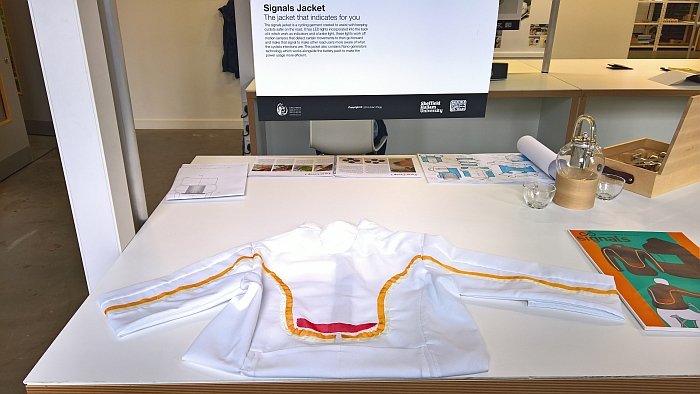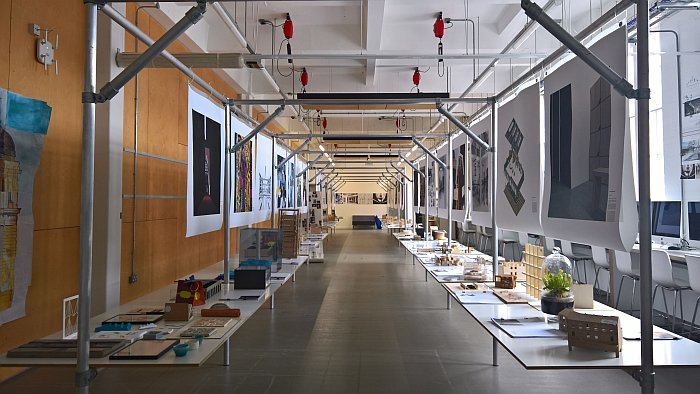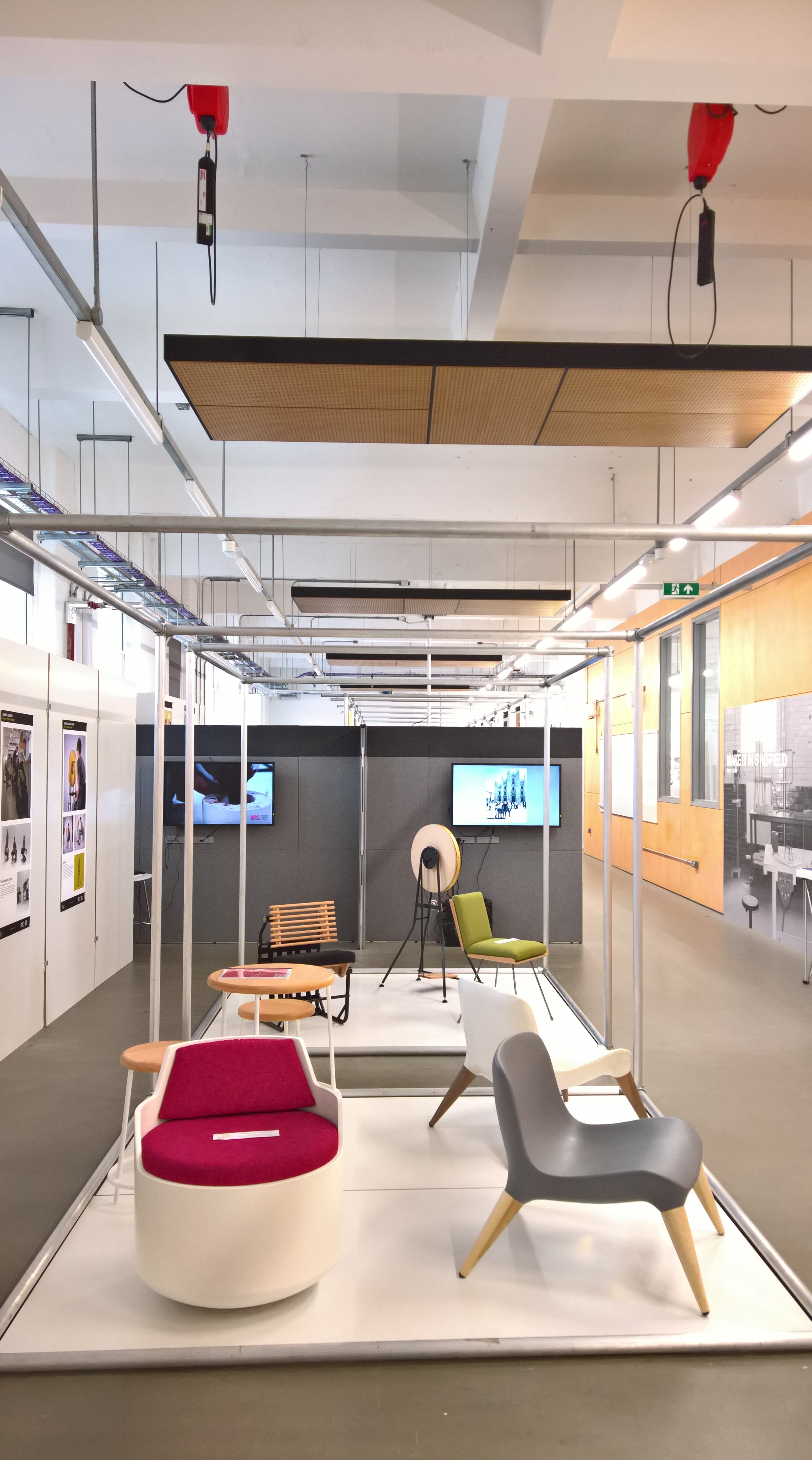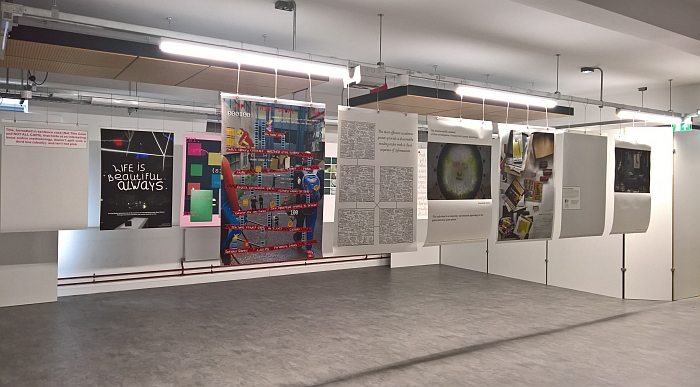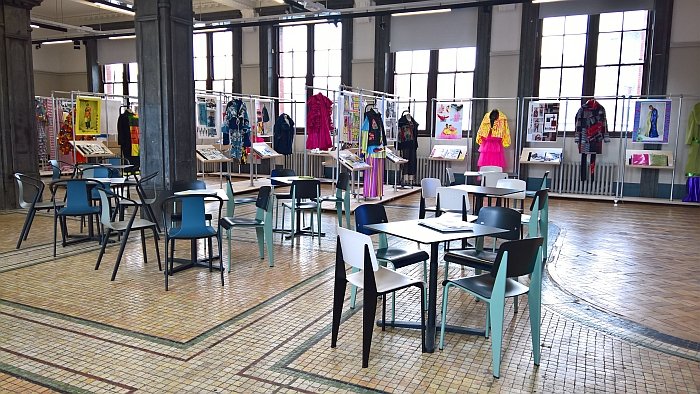19th century Sheffield was the City of Steel; as one of the major centres of steel and steelware in the British Empire, Sheffield was not only important in the evolution of functional-decorative & decorative-functional tableware, personal and household accessories, but also one of technical innovation, for all the development in the city of stainless steel revolutionising global product design and architecture.
20th century Sheffield was one of the main centres for the development and evolution of UK music; the collapse of the steel industry in the second half the 20th century seeing artists as varied as, and amongst many others, The Human League, Cabaret Voltaire, Def Leppard or Pulp making prudent use of the post-industrial cityscape, and for all the availability of post-industrial space for rehearsing, to develop their individual soundscapes.
21st century Sheffield is home of the World Snooker Championship.
But would the 2018 graduation projects from design students at the Sheffield Institute of Arts see them pot the reds then, screw back, for the yellow, green, brown, blue, pink and black? Or would they miscue and go in-off............?

Founded in 1843 as the ornamental and applied arts orientated Government School of Design, the institution first made a name for itself at the 1851 London Great Exhibition where Sheffield students won 4 Gold Medals: two for furniture, one for a fireplace, one for a marble mantelpiece, and were thereby the only design school to win medals at the exhibition. At least according to the school, we've not checked, but really see no reason to doubt them.
Following a slow transformation, a process which saw the more artistic courses initially offered joined by more practical subjects such as lithography, bookbinding or metalwork, the institution was re-named in 1903 the Sheffield Technical School of Art, a new name which also highlighted the much more technical nature, for all the increased focus on trades and industrial crafts. And thus a school very reflective of the increasing industrialisation of age.
Throughout the 20th century the school remained its joint focus on pure and applied arts, in context of the latter for all in the metalwork, silversmithery and cutlering et al necessary to support local industry, before in 1969, and with the beginning of the end of the dominance of steel from Sheffield, the, then, Sheffield College of Art merged with Sheffield College of Commerce and Technology to form Sheffield Polytechnic which subsequently became Sheffield Hallam University in 1992. The contemporary Sheffield Institute of the Arts being a department within the University's Faculty of Arts, Computing, Engineering and Sciences.
Throughout the course of its history the school has called numerous locations home, starting in a room above a pub and moving into its current home, the former Post Office building on Fitzalan Square in 2016, and where it offer courses in a wide range of creative disciplines, including, and amongst others, Animation, Architecture, Fine Art, Photography, Product Design and Product Design: Furniture.
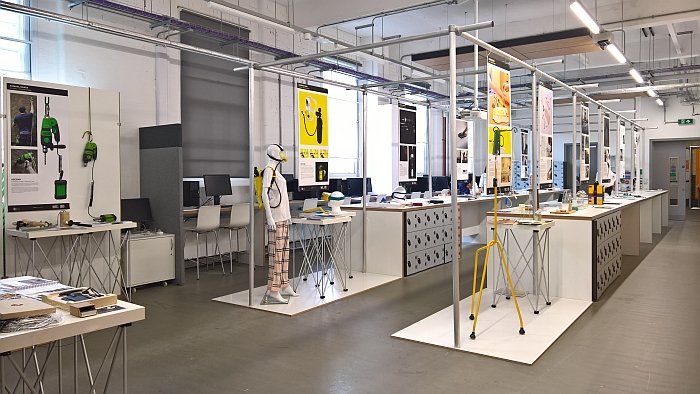
Presenting projects from across the Institute's spectrum the principle focus for us at the 2018 Sheffield Institute of Arts Graduate Exhibition was the bachelor courses in Interior Design, Product Design and Product Design: Furniture, as well as the masters in Design the projects by the Art and Design Research Centre PhD students, the latter taking on the concept of the academic poster as the basis for its presentation: and was, at least for us, impenetrable. We couldn't tell you what a single project was about. We appreciate why they did what they did, but an academic poster that doesn't convey the research to the viewer is about as useful a fork which doesn't convey the food to the diner. We do however have a list of the students and come the calm of August will (endeavour to) have a look at what we missed/were denied.
Much clearer was the presentations of the design bachelor projects, whereby a couple of projects particularly tickled our fancies.
In no particular order.......
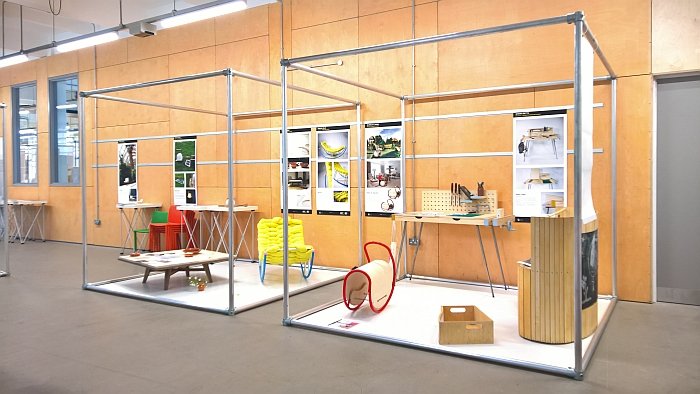
In many regards 200FIFTY6 isn't/wasn't the chair presented in the exhibition, but the base plate on its underside and to which the seat/back/legs/armrests/et al were/can be attached, a base plate which allows, in Callum Grant's proposal for 256 different chair variations.
Hence the name.
Now variable, customisable, modular seating systems ain't new, and no-one is pretending they are; however, what we like about 200FIFTY6 is that whereas the modularity in seating systems is normally, when not hidden, then certainly more implied than highlighted. With shelving systems it is different, they tend to wear their modularity as badge of honour, shout out to all who pass by "Look at me! You can re-configure me!"; but with the chair its normally case of configure when ordering and then leave well be. For new needs order new chairs. With 200FIFTY6 Callum makes the variability visible and thereby accessible, actively encouraging you to make changes, something particularly interesting in contract environments - so large offices public/shared spaces, institutions - places where the normal flow of business and evolution means that differing chair types are needed with more or less regularity. Why not have stock of components which can be combined to create the chairs needed for specific requirements? And then change them when the requirement changes. Doing such involves disengaging the chair from the idea of a fixed object, and for all from conventional, contemporary production and distribution systems, and making, in effect a "chair" a range of components and a chair manufacturer and supplier of components. Which 200FIFTY6 does.
As a project it clearly still got a good deal of development work to be done, not least for us formally where it needs to decide what it wants to be, we were getting very mixed messages from it, but as a work in progress, very interesting.
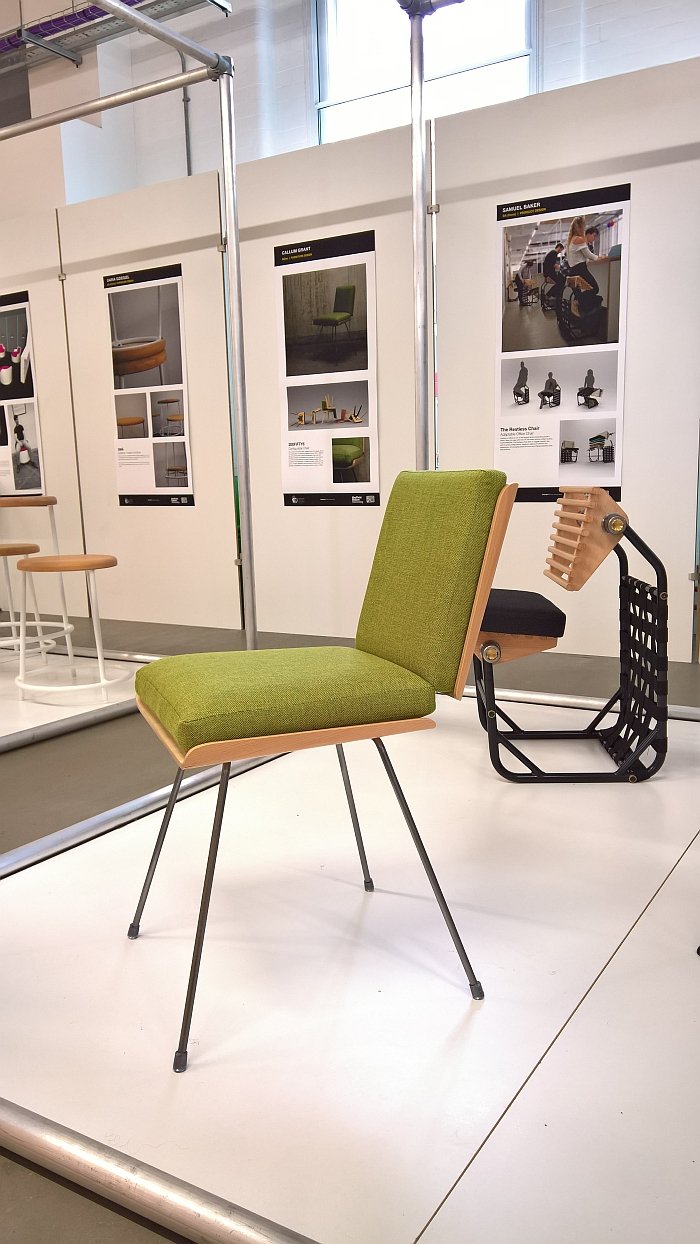
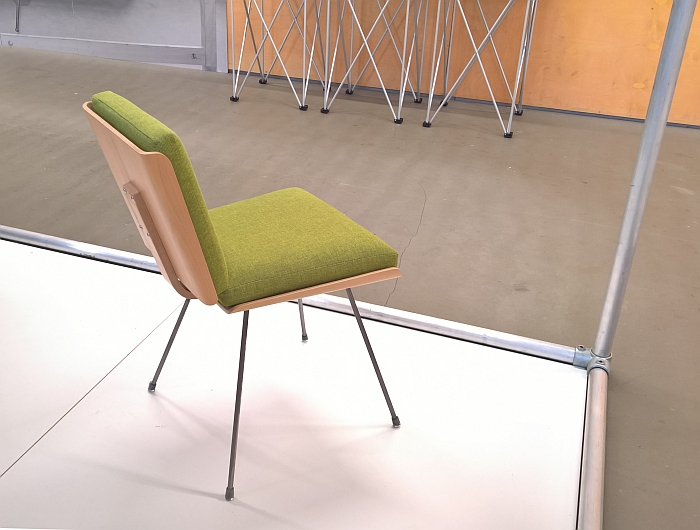
According to the old anecdote, upon seeing a rocking horse designed by one of his students at the Hochschule für Werkkunst Dresden Mart Stam, opined, in his best Dutch-German, “When horse fall over, horse is dead. You must make horse that isn’t dead when it fall over”
Reflecting on this the student involved, Hans Brockhage, developed, together with fellow student Erwin Andrä, their Schaukelwagen: an object that can be used both ways round and which when the horse falls/flips over, becomes a car.
Rock 'n' Roller by Scarlett Darby is in principle a very similar project, yet fundamentally different.
Rather than flipping it over to create an extended functionally Scarlett proposes wheels hidden within the body which can be lowered as and when required to transform horse to car to horse; less a case of the horse not dieing when it falls over and more a case of the horse not becoming irrelevant when you want to travel somewhere.
Based on a steel tube frame with a moulded plywood body Rock 'n' Roller does that very nice implied horse thing, what we can't comment on however is how well the proposed transformation from rock to roll functions: the prototype presented not having such. Just rock. Which is fine, as we always note student projects shouldn't be works that can be in the shops within a fortnight, but should, amongst other things, show the competent development of an idea. Rock 'n' Roller does. And the technical challenges are something that we can well believe will take longer to solve than that allowed by a student graduation project. But which we don't believe to be insurmountable.......
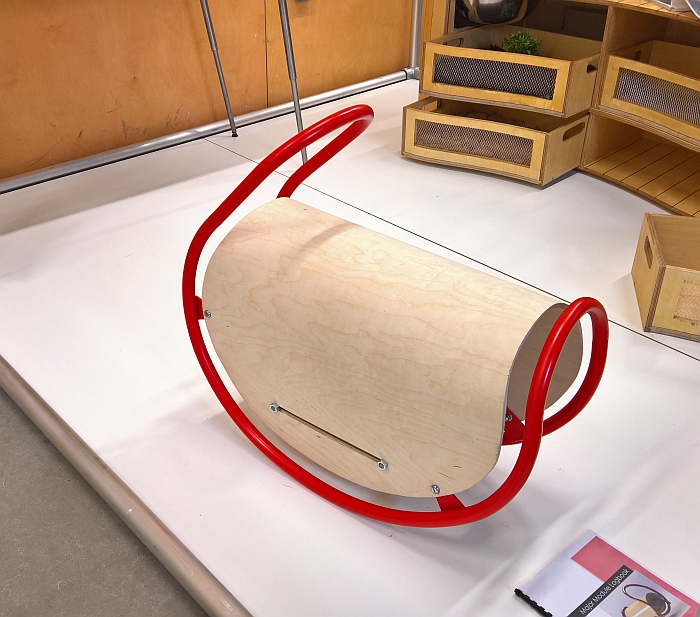
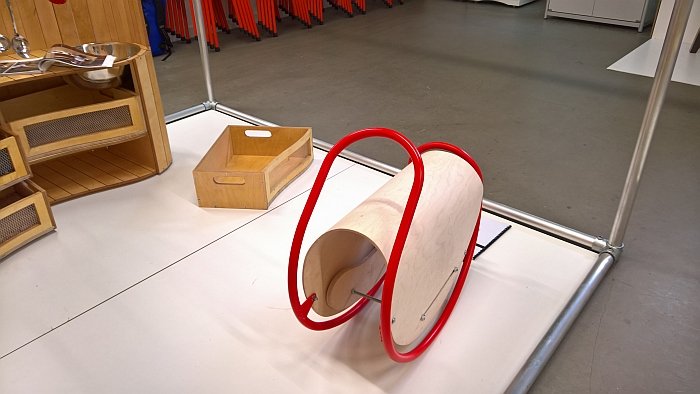
Its a very simple thing, and tickled us greatly.
Hospital furniture and equipment is by necessity primarily designed to be not only functional but also technically appropriate. Which doesn't always mean aesthetically appealing. Far less patient appropriate. With GIO Louis Block has re-imagined the IV drip stand in context of children.
And made it a giraffe.
And therefore less daunting. If even we couldn't recommend approaching giraffes in the wild. Docile, but unpredictable.
A delightfully reduced steel tube body with a couple of pleasing technical features, a particularly nice touch is the cardboard slips to cover the bags, slips the child can colour, stick things to and generally approach as an art project. And thereby allowing for a nice touch of customisation and also personal association, the stand/giraffe becomes that child's own. There is little point in trying to pretend to a hospitalised sick child that they either aren't sick or aren't in hospital, but that doesn't mean one can't create a more playful, child friendly environment.
The obvious restriction with GIO is that he/she is a rare example of the three-legged species Giraffa tripodialis, as such whereas GIO can be fitted with castors, stability issues mean it's unlikely that he/she would be allowed to be used with castors in a hospital environment; however, static stands are also needed, and the potential for development into a series of stands based on further animals is so obvious as to be unavoidable. And there are plenty of long-necked five and six legged creatures out there........
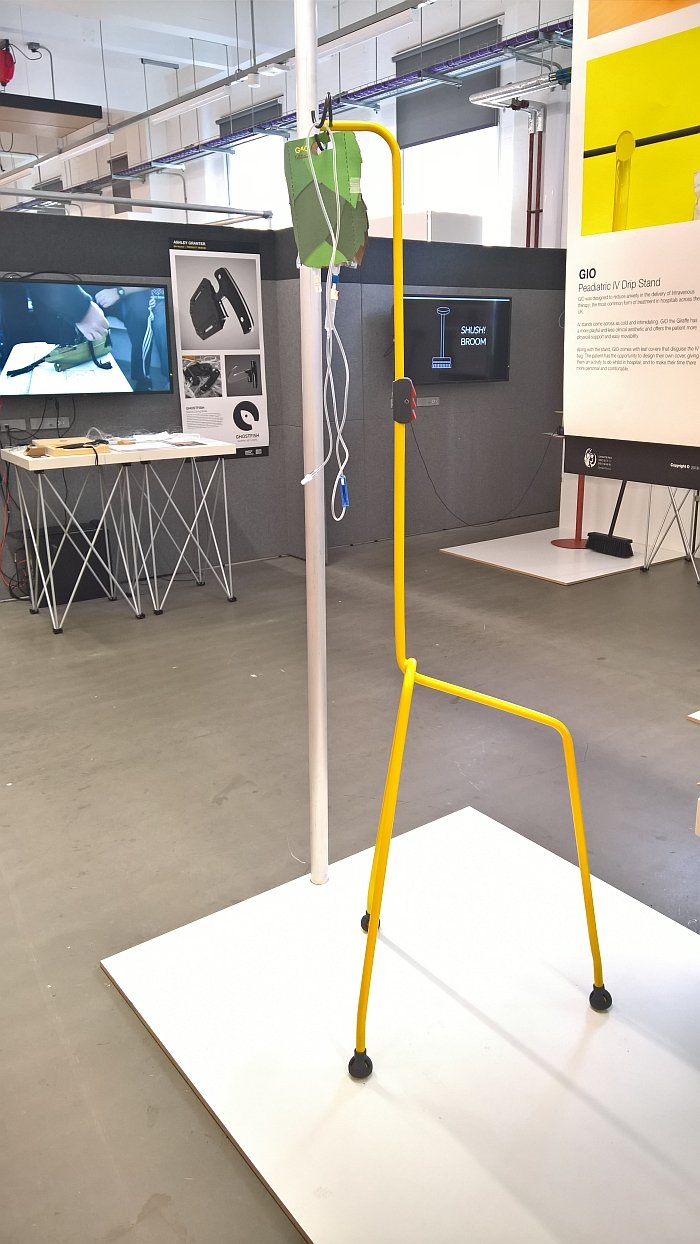
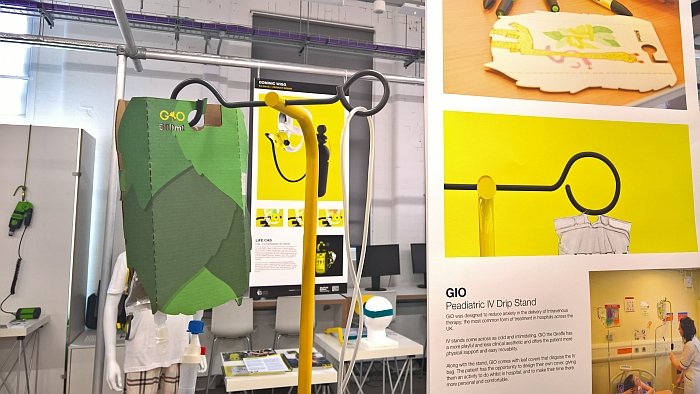
Smart textiles, textiles which contains a functionality beyond their primary, is currently a rapidly expanding field of research and activity, for all as new technology and new materials make ever more possible.
Signals Jacket by Adam Pegg is a very interesting and promising proposal. And highly sensible.
Essentially a cycling jacket with indicators and brake lights integrated into the back and arms, Signals Jacket adds another level of visibility and safety for cyclists: and that in an object most cyclists normally/often wear and in a manner which all motorists are familiar with, thereby improving the likelihood that it will have the desired effect.
Whereby we must add the idea isn't completely new, a decade or so ago a similar project won several awards including the 2008 James Dyson award. And has since, and as far as we can ascertain, pretty much sunk without trace.
Why, we no know, because as an idea it is interesting, promising and sensible, and as an item of clothing, very desirable.
Full details of the Sheffield Institute of Arts can be found at https://www4.shu.ac.uk/sia/
